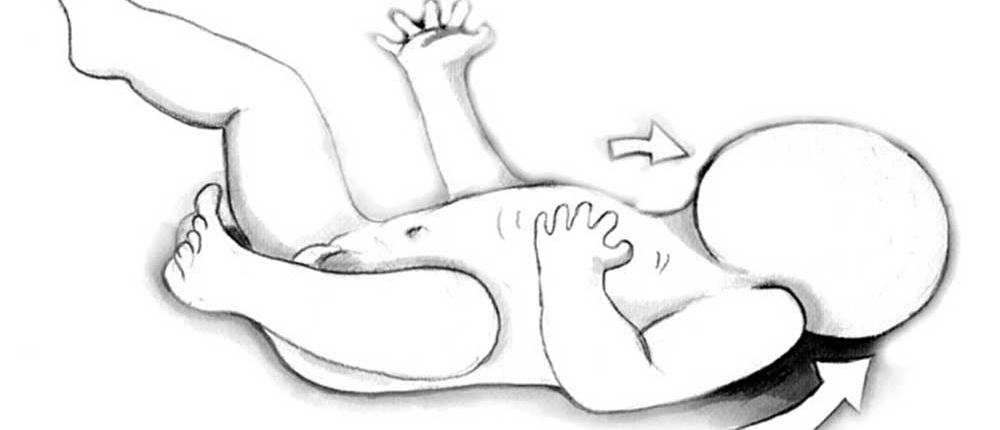Fear Paralysis Reflex
In the fear-paralysis reflex (FPR), the baby freezes in motion. Arms and legs maintain a slight bend. This reflex is triggered visually, tactilely, or audibly.
Explanations fear paralysis reflex
The FPR is one of two reflexes that do not integrate but instead transform, meaning it changes from an infantile to a mature startle response. The FPR develops in utero and forms the basis for all subsequent reflexes. It is a startle or fear reaction that lasts a lifetime. It later transitions into the mature Strauss reaction. The transformation of the FPR into the mature Strauss reaction is essential for proper handling of startling situations.
If the reflex is not transformed, the following abnormalities can occur:
- Freezing in fright situations without possibility of action
- Sudden infant death syndrome is possible
- Dry drowning, person can only inhale, not exhale Immediate slowing of heartbeat on reflex activation This reduces oxygen delivery to the brain
- Drop in blood pressure
- Pale
- Rapid reduction of body temperature
- Lowered seizure threshold in epileptics
- Flaccid muscle tone – body slumps in on itself
- Fainting spells
- Hypersensitivity to light, noise, crowds, criticism.
Inability to respond to external stimuli or events - Autism-like behavior Inability to respond to threatening situations
- Difficulty swallowing
- Linguistic expression difficulties in conflicts
- Conflict avoidance
- Hypochondria
- Extreme sensitivity to touch (see tactility)
- Depression and suicide risk
- Separation anxiety
- School Anxiety
- Emotional rigidity
More interesting knowledge…
… about early childhood reflexes, as well as concrete exercises for subsequent integration and centering can be found in my course BalanceHIRO®.


